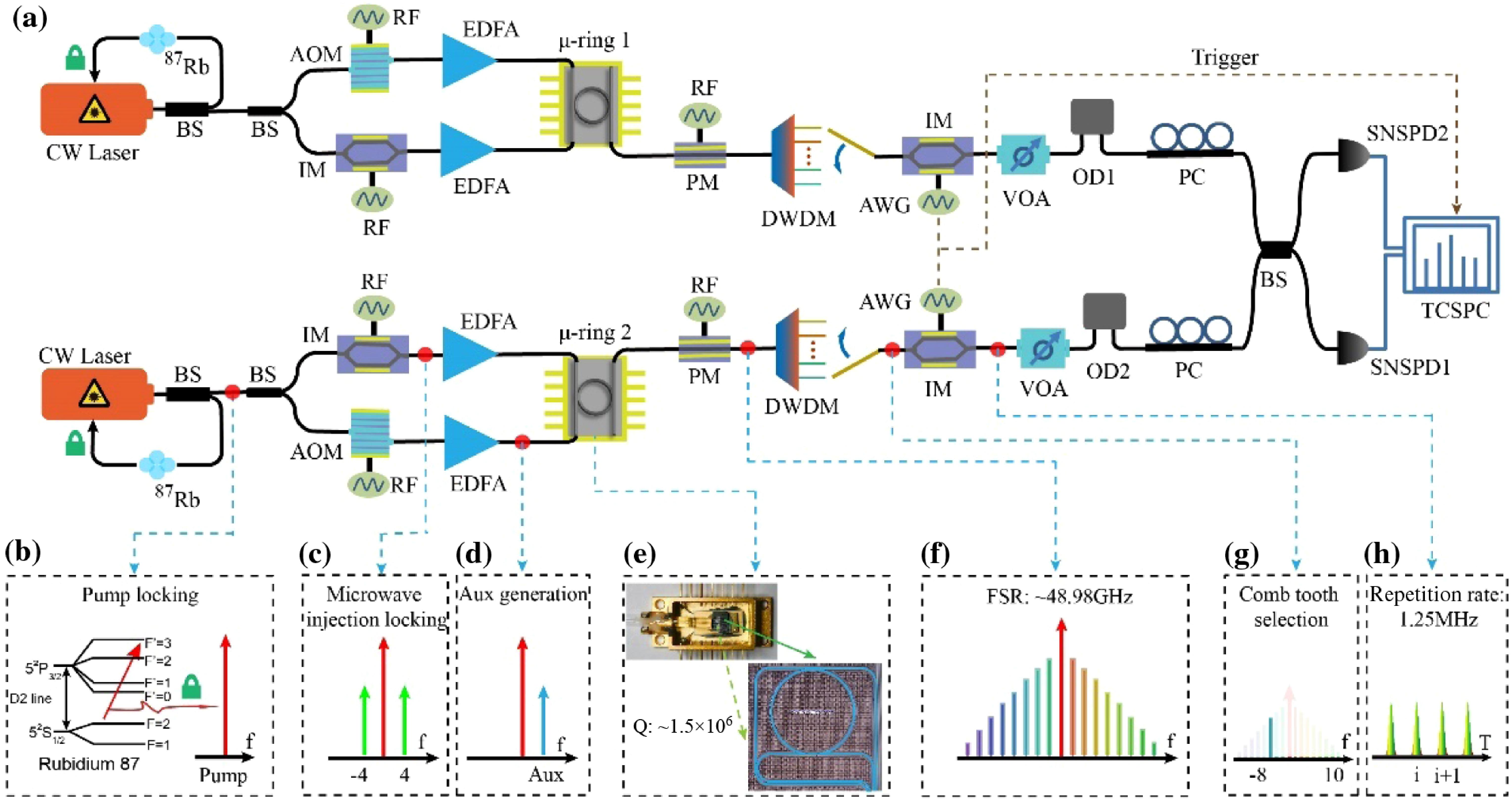Long Huang, Linhan Tang, Yang Wang, Minhui Cheng, B. E. Little, Sai T. Chu, Wei Zhao, Weiqiang Wang, Wenfu Zhang, "Multi-channel Hong–Ou–Mandle interference between independent comb-based weak coherent pulses," Photonics Res. 13, 837 (2025)
Search by keywords or author
- Photonics Research
- Vol. 13, Issue 4, 837 (2025)

Fig. 1. Schematic diagram of the principle of WCPs HOM interference. (a) Diagram of the principle of WCPs HOM interference; WCPs in paths a b

Fig. 2. Experimental setup. (a) Schematic diagram of the experimental principle of multi-path WCPs HOM interference based on independently generated SMCs. CW laser: continuous wave laser; R 87 b μ R 87 b F = 2 F ′ = 3 Q ) factor is ∼ 2.1 × 10 6
Fig. 3. Results of two independently fully locked SMCs. (a) Single-soliton state spectra of two independently generated SMCs. The top left inset shows the comb teeth selected in the experiment for generating WCPs, along with their numbering. (b) The recorded beat signals of two atomic transition referenced pump lasers. The two locked lasers have the same average frequency of 192.1140573 THz with a peak-peak frequency fluctuation of 0.247 MHz in an hour. (c) Repetition rate signals of two independently generated SMCs in the single-soliton state: unlocked [left, (c)] and locked [right, (c)]. When the repetition rates are locked to ultra-stable microwave signals, the jitter of the repetition rate signal is reduced by three orders of magnitude compared to the unlocked state.
Fig. 4. WCPs generation. (a) The comb tooth of the SMC is modulated into pulses with an FWHM of ∼ 200 ps ∼ 80
Fig. 5. HOM interference between two independently generated WCPs based on the SMCs. (a) The normalized coincidence counts between SNSPD1 and SNSPD2 versus the temporal misalignment adjusted by OD1 and OD2. The 16 channels in (a) correspond to the selected comb teeth shown in the inset of Fig. 2 (a). (b) HOM interference fringe of channel 3 between two independent WCPs. The fringe visibility is estimated to be 46.69 % ± 0.85 % ± 0.94 %
Fig. 6. Packaging of the MRR and generation of SMC. (a) Experimental setup diagram for the generation of fully locked SMC. Dashed box: schematic diagram of the modulation transfer spectroscopy method for locking the pump laser frequency. (b) Loaded Q -factor of the Hydex material micro-ring resonator used in the experiment. (c) Butterfly package of the MRR (c-I) and microscope photograph (c-II).

Set citation alerts for the article
Please enter your email address



